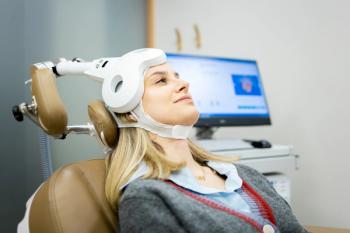
Is There a Role for Saffron Phytotherapy in Treating Depression?
Patients often have questions concerning integrative therapeutic modalities, and it is important to know the existing evidence as well as limitations of current research.
BRIEF COMMUNICATION
The field of
Saffron is the dried stigma of the crocus sativa plant and has been used in Eastern medicine for centuries for various ailments including mood.2 Cultivation of the stigmas, which contain the components believed to have therapeutic properties, is extremely labor intensive. Stigmas contain 4 bioactive compounds: crocins and crocetins, which are responsible for the characteristic deep yellow color of saffron; picrocrocin, responsible for the characteristic bitter taste; and safranin, responsible for the hay-like aroma.3 These compounds exert antioxidant, anti-inflammatory, serotonergic, neuroendocrine, and neuroprotective effects.
An early
Since then, additional studies have emerged. A randomized controlled trial (RCT) comparing citalopram to saffron, showed improvements in both depression and anxiety over 6 weeks as measured by the HAMD and the Hamilton Anxiety Rating Scale (HAMA) in patients with mild to moderate symptoms.5 Another double-blind RCT used a slightly higher dose of saffron at 50 mg daily against placebo in mild to moderate MDD patients over 12 weeks. A statistically significant reduction in depression was found, as measured by the Beck Depression Inventory (BDI).6
In a 2015 double-blind RCT,
A systematic review by
Importantly, no serious adverse effects were reported in any of these saffron studies. In fact, one study even evaluated its cardio protective effects in patients with comorbid depression and prior histories of post-percutaneous coronary interventions.13 The underlying mechanism for this was hypothesized to be attributed to crocin scavenging free radicals, exerting antioxidant effects, and inducing hypotensive effects.
Thus far, in several small studies, saffron dosed at 15 mg twice daily has shown similar efficacy to conventional antidepressants. This finding, however, was only demonstrated in patients with mild to moderate severity of unipolar depression. The exact adverse effects, long-term outcomes, as well as feasibility for use in populations with comorbidities or on complex regimens have not been explored. It is important to note that in all studies, 4 to 6 weeks were required for any demonstrable improvement. It is also relevant to note that studies of cognitive behavioral therapy (CBT) in mild to moderate depression have shown results on par with conventional antidepressants, and with the studies of saffron.14,15 Saffron supplements are not cheap.
Clinical bottom line
Current evidence is intriguing regarding the potential antidepressant effects of saffron. We certainly do not consider this to be ready for clinical implementation and do not advocate for its endorsement by physicians in replacement of the current standard of care. However, it is likely that in our practices, we will encounter patients who have questions concerning integrative therapeutic modalities, and it is important to know the existing evidence as well as limitations of recent studies. Potentially, if saffron is to undergo rigorous large trials for safety and efficacy and obtain FDA approval, it could serve as an option for patients with unipolar mild-moderate depression who are resistant to conventional antidepressants or CBT.
Dr Stanciu is Assistant Professor of Psychiatry at Dartmouth’s Geisel School of Medicine and Director of Addiction Services at New Hampshire Hospital, Concord, NH. He is the Addiction Section Editor for Psychiatric Times. Dr Teja is an upcoming PGY-5 Addiction Psychiatry Fellow at Dartmouth’s Geisel School of Medicine, Hanover, NH. The authors report no conflicts of interest concerning the subject matter of this article.
References
1. Horrigan B, Lewis S, Abrams DI, Pechura C.
2. Dwyer A V, Whitten DL, Hawrelak JA. Herbal medicines, other than St. John’s Wort, in the treatment of depression: a systematic review. Altern Med Rev. 2011;16(1):40-49.
3. Christodoulou E, Kadoglou NPE, Kostomitsopoulos N, Valsami G. Saffron: a natural product with potential pharmaceutical applications. J Pharm Pharmacol. 2015;67(12):1634-1649. doi:10.1111/jphp.12456
4. Hausenblas HA, Heekin K, Mutchie HL, Anton S. A systematic review of randomized controlled trials examining the effectiveness of saffron (Crocus sativus L.) on psychological and behavioral outcomes. J Integr Med. 2015;13(4):231-240. doi:10.1016/S2095-4964(15)60176-5
5. Ghajar A, Neishabouri SM, Velayati N, et al.
6. Mazidi M, Shemshian M, Mousavi SH, et al. A double-blind, randomized and placebo-controlled trial of Saffron (Crocus sativus L.) in the treatment of anxiety and depression. J Complement Integr Med. 2016;13(2):195-199. doi:10.1515/jcim-2015-0043
7. Talaei A, Moghadam MH, Tabassi SAS, Mohajeri SA.
8. Kashani L, Eslatmanesh S, Saedi N, et al. Comparison of Saffron versus Fluoxetine in Treatment of Mild to Moderate Postpartum Depression: A Double-Blind, Randomized Clinical Trial. Pharmacopsychiatry. 2017;50(2):64-68. doi:10.1055/s-0042-115306
9. Ahmadpanah M, Ramezanshams F, Ghaleiha A, et al. Crocus Sativus L. (saffron) versus sertraline on symptoms of depression among older people with major depressive disorders–a double-blind, randomized intervention study. Psychiatry Res. 2019;282:112613. doi:10.1016/j.psychres.2019.112613
10. Marx W, Lane M, Rocks T, et al.
11. Yang X, Chen X, Fu Y, et al. Comparative efficacy and safety of Crocus sativus L. for treating mild to moderate major depressive disorder in adults: a meta-analysis of randomized controlled trials. Neuropsychiatr Dis Treat. 2018;14:1297-1305. doi:10.2147/NDT.S157550
12. Khaksarian M, Behzadifar M, Behzadifar M, et al. The efficacy of Crocus sativus (Saffron) versus placebo and Fluoxetine in treatingdepression: a systematic review and meta-analysis. Psychol Res Behav Manag. 2019;12:297-305. doi:10.2147/PRBM.S199343
13. Shahmansouri N, Farokhnia M, Abbasi S-H, et al. A randomized, double-blind, clinical trial comparing the efficacy and safety of Crocus sativus L. with fluoxetine for improving mild to moderate depression in post percutaneous coronary intervention patients. J Affect Disord. 2014;155:216-222. doi:10.1016/j.jad.2013.11.003
14. Farabaugh A, Fisher L, Nyer M, et al. Similar changes in cognitions following cognitive-behavioral therapy or escitalopramfor major depressive disorder: Implications for mechanisms of change. Ann Clin Psychiatry. 2015;27(2):118-126.
15. Hollon SD, DeRubeis RJ, Fawcett J, et al. Effect of cognitive therapy with antidepressant medications vs antidepressants alone on the rate of recovery in major depressive disorder: a randomized clinical trial. JAMA Psychiatry. 2014;71(10):1157-1164. doi:10.1001/jamapsychiatry.2014.1054
16. Shahnoushi N, Abolhassani L, Kavakebi V, et al. Chapter 21 - Economic analysis of saffron production. In: Koocheki A, Khajeh-Hosseini M, eds.
Newsletter
Receive trusted psychiatric news, expert analysis, and clinical insights — subscribe today to support your practice and your patients.













